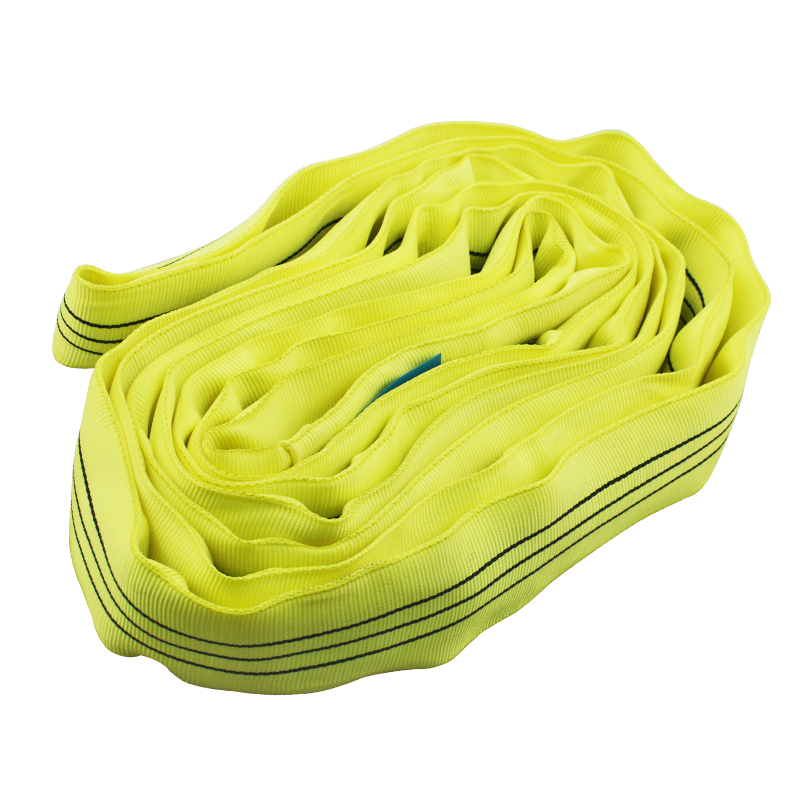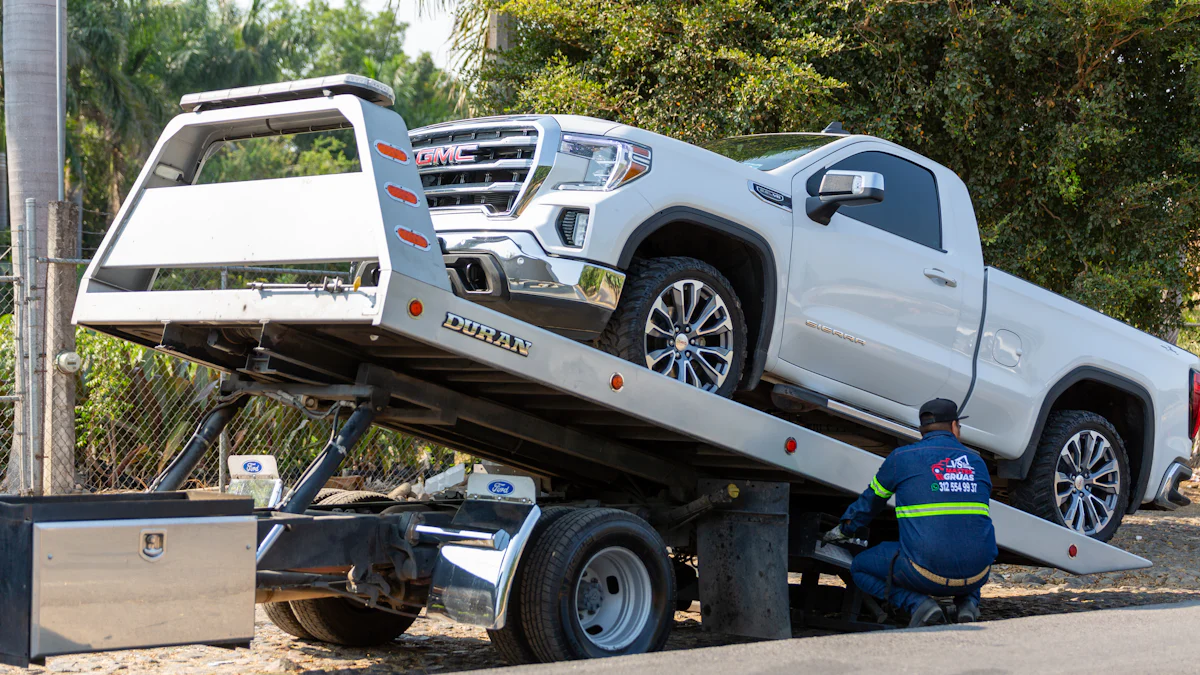
TIE DOWN STRAP serves as a reliable tool for securing cargo during transport, but it lacks the design and strength required for towing. Attempting to use it for towing can lead to severe consequences, including sudden strap failure and potential accidents. The rigid structure of these straps makes them unsuitable for handling the dynamic forces involved in towing. To ensure safety and prevent damage, individuals should rely on purpose-built alternatives like tow straps or recovery straps, which are specifically engineered for such tasks.
Key Takeaways
- Tie down straps are designed for securing cargo, not for towing, and using them for towing can lead to serious accidents.
- The rigid structure of tie down straps lacks the elasticity needed to absorb shock during towing, increasing the risk of strap failure.
- Tow straps and recovery straps are specifically engineered for towing, providing the necessary strength and flexibility to handle dynamic forces safely.
- Using the right towing equipment minimizes risks and prevents potential damage to vehicles and injuries to bystanders.
- Always select a tow strap that matches or exceeds the weight of the vehicle being towed to ensure safe towing operations.
- In emergencies, avoid using tie down straps for towing; instead, rely on purpose-built tools designed for such tasks.
Why TIE DOWN STRAP is not suitable for towing

The design and purpose of TIE DOWN STRAP
Made for securing cargo, not pulling loads
TIE DOWN STRAP serves a specific purpose in transportation. Manufacturers design these straps to secure cargo firmly in place during transit. Their primary function involves holding items stationary, preventing movement that could lead to damage or accidents. The materials and construction focus on maintaining tension over stationary loads rather than enduring the dynamic forces involved in towing. Attempting to use TIE DOWN STRAP for pulling vehicles or heavy loads exceeds its intended capabilities, leading to potential failure.
Lack of elasticity and strength required for towing
Elasticity plays a critical role in towing operations. Tow straps, for instance, stretch slightly to absorb the shock generated when pulling a vehicle. This flexibility reduces strain on both the towing and towed vehicles. In contrast, TIE DOWN STRAP lacks this elasticity. Its rigid structure cannot handle the sudden jerks and forces that occur during towing. Additionally, the strength of TIE DOWN STRAP falls short of the requirements for towing heavy loads. Overloading these straps can result in snapping, creating hazardous situations.
Risks of using TIE DOWN STRAP for towing
Potential for strap failure under tension
Using TIE DOWN STRAP for towing introduces significant risks. These straps are not engineered to withstand the high tension generated during towing. When subjected to such forces, the fibers in the strap may weaken or break entirely. Strap failure can occur suddenly, leaving the towed vehicle stranded or causing it to roll uncontrollably. This failure not only damages the strap but also endangers the safety of individuals nearby.
Increased risk of accidents, vehicle damage, or injury
Improper use of TIE DOWN STRAP for towing increases the likelihood of accidents. A snapped strap can cause the towed vehicle to collide with obstacles or other vehicles. The lack of elasticity in the strap amplifies the force exerted on both vehicles, potentially damaging their frames or attachment points. Furthermore, flying debris from a broken strap poses a serious risk of injury to bystanders. These dangers highlight the importance of using equipment specifically designed for towing tasks.
Key differences between TIE DOWN STRAP and tow straps
Material and durability
TIE DOWN STRAP is made of less durable materials
Manufacturers design TIE DOWN STRAP with materials that prioritize securing stationary cargo rather than enduring the dynamic forces of towing. These straps often use polyester webbing, which provides sufficient strength for holding items in place during transport. However, this material lacks the durability required to handle the immense stress generated during towing operations. The fibers in TIE DOWN STRAP can fray or weaken when exposed to excessive tension, making them unreliable for pulling heavy loads.
Tow straps are designed to handle heavy loads safely
Tow straps, on the other hand, are specifically engineered to withstand the demands of towing. They are typically made from high-strength materials such as nylon, which offers superior durability and resilience. This construction allows tow straps to endure the weight and force of pulling vehicles without compromising their integrity. Their robust design ensures that they can handle heavy loads safely, reducing the risk of failure during use. Tow straps provide a dependable solution for towing tasks, unlike TIE DOWN STRAP, which lacks the necessary strength.
Elasticity and functionality
Tow straps have elasticity to absorb shock during towing
Elasticity is a critical feature that sets tow straps apart from TIE DOWN STRAP. Tow straps incorporate a degree of stretch, which helps absorb the shock generated when a vehicle is pulled. This elasticity minimizes the impact on both the towing and towed vehicles, preventing sudden jerks that could cause damage. The ability to flex under tension makes tow straps highly effective for towing operations, as they reduce strain on attachment points and ensure smoother movement.
TIE DOWN STRAP is rigid and prone to snapping under stress
In contrast, TIE DOWN STRAP lacks the elasticity needed for towing. Its rigid structure cannot accommodate the dynamic forces involved in pulling a vehicle. When subjected to sudden tension, the strap may snap, posing significant safety risks. The absence of flexibility not only increases the likelihood of strap failure but also amplifies the force exerted on the vehicles, potentially causing damage to their frames or connection points. This limitation highlights why TIE DOWN STRAP is unsuitable for towing tasks.
Safer alternatives for towing
Tow straps
Specifically designed for towing vehicles
Tow straps provide a reliable solution for towing tasks. Manufacturers design these straps specifically to handle the forces involved in pulling vehicles. Their construction ensures they can endure the stress of towing without compromising safety. Tow straps often feature reinforced loops or hooks, which allow secure attachment to vehicles. This design minimizes the risk of detachment during use, making them a dependable choice for towing operations.
Available in various weight capacities for different needs
Tow straps come in a range of weight capacities to accommodate different towing requirements. Lightweight options work well for smaller vehicles, while heavy-duty straps handle larger loads with ease. Users should select a strap that matches or exceeds the weight of the vehicle being towed. This ensures the strap can perform effectively under pressure. The availability of multiple options makes tow straps versatile and suitable for various towing scenarios.
Recovery straps
Ideal for pulling stuck vehicles with added elasticity
Recovery straps excel in situations where vehicles become stuck in mud, sand, or snow. These straps incorporate elasticity, which allows them to stretch slightly during use. This feature generates a pulling force that helps dislodge the stuck vehicle. The added flexibility reduces the strain on both vehicles, making recovery straps an excellent choice for challenging conditions. Their design prioritizes efficiency and safety during recovery operations.
Reduces strain on vehicles during towing
The elasticity of recovery straps plays a crucial role in minimizing strain on vehicles. When tension builds during towing, the strap absorbs the shock, preventing sudden jerks. This reduces the risk of damage to attachment points or vehicle frames. Recovery straps ensure smoother towing experiences by distributing the forces evenly. Their ability to protect vehicles from excessive stress makes them a preferred option for many drivers.
Tow chains or cables
Durable and reliable for heavy-duty towing
Tow chains and cables offer unmatched durability for heavy-duty towing tasks. These tools consist of high-strength materials like steel, which can withstand immense loads. Their robust construction ensures reliability even in demanding situations. Tow chains and cables are ideal for towing large vehicles, such as trucks or industrial equipment. Their strength and resilience make them a trusted choice for professionals.
Suitable for industrial or off-road use
Tow chains and cables perform exceptionally well in industrial and off-road environments. Their durability allows them to handle rough terrains and challenging conditions. Off-road enthusiasts often rely on these tools for towing vehicles through rugged landscapes. In industrial settings, tow chains and cables prove invaluable for moving heavy machinery. Their versatility and strength make them indispensable for specialized towing applications.
TIE DOWN STRAP lacks the necessary design and strength for towing tasks. Its rigid structure and limited durability make it unsuitable for handling the dynamic forces involved in pulling vehicles. Tow straps, recovery straps, and tow chains provide safer and more efficient alternatives. These tools are specifically engineered to withstand the demands of towing while ensuring safety and reliability. Selecting the appropriate equipment minimizes risks and prevents potential damage. Individuals should always prioritize using purpose-built tools to achieve successful and secure towing operations.
FAQ
Can tie down straps be used for towing in emergencies?
Tie down straps should not be used for towing, even in emergencies. Their design focuses on securing stationary cargo, not handling the dynamic forces involved in towing. Using them in such situations increases the risk of strap failure and accidents.
What makes tow straps a better option than tie down straps?
Tow straps are specifically designed for towing vehicles. They use high-strength materials like nylon and incorporate elasticity to absorb shock during towing. These features make them safer and more reliable than tie down straps, which lack the necessary strength and flexibility.
Are recovery straps suitable for all towing situations?
Recovery straps work best for pulling vehicles stuck in mud, sand, or snow. Their elasticity helps dislodge stuck vehicles while reducing strain on both vehicles. However, they may not be ideal for heavy-duty towing tasks, where tow chains or cables perform better.
How can someone determine the right tow strap for their vehicle?
The weight capacity of the tow strap should match or exceed the weight of the vehicle being towed. Manufacturers often provide weight ratings for their straps. Selecting a strap with an appropriate rating ensures safe and effective towing.
Why do tie down straps lack the elasticity needed for towing?
Tie down straps are made from rigid materials like polyester webbing. This construction prioritizes maintaining tension over stationary loads. The absence of elasticity makes them unsuitable for absorbing the shocks and jerks that occur during towing.
Are tow chains or cables better than tow straps?
Tow chains and cables excel in heavy-duty towing tasks and industrial applications. Their steel construction provides unmatched durability and strength. However, they lack the elasticity of tow straps, which makes tow straps better suited for lighter towing tasks.
What are the risks of using tie down straps for towing?
Using tie down straps for towing can lead to sudden strap failure, vehicle damage, and accidents. The rigid structure of these straps cannot handle the dynamic forces of towing. This limitation increases the likelihood of snapping under tension.
Can ratchet tie down straps be used for towing motorcycles?
Ratchet tie down straps are designed to secure motorcycles during transport, not for towing them. Their purpose is to hold the motorcycle stationary on a trailer or truck bed. Attempting to tow a motorcycle with these straps can result in failure and damage.
What are the different types of tie down straps available?
Tie down straps come in various types, including cam buckle straps, heavy-duty ratchet straps, E-track ratchet straps, motorcycle tie down straps, camouflage ratchet straps, and automatic tie down straps. Each type serves specific purposes, primarily for securing cargo.
How can individuals ensure safe towing practices?
Individuals should always use equipment designed for towing, such as tow straps, recovery straps, or tow chains. They should check the weight capacity of the equipment and ensure proper attachment to both vehicles. Following these practices minimizes risks and ensures safety.
Post time: Dec-31-2024

